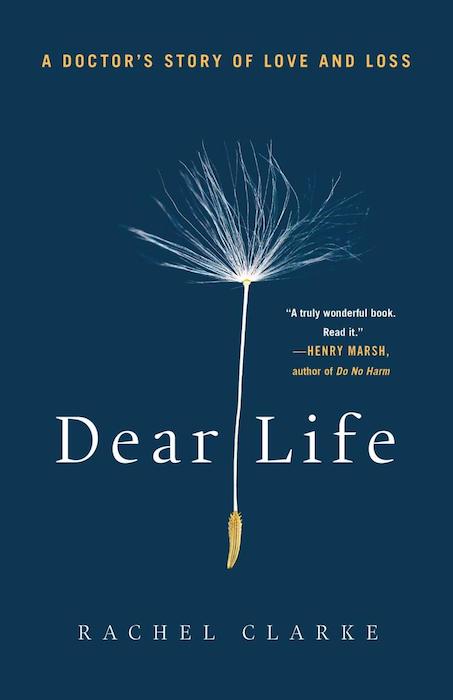
Before the doctor opened her mouth, you knew this wasn’t going to be good.
And it wasn’t, although you can barely remember what happened a minute after you heard the diagnosis. All you could wrap your head around were monitors and tubes and machines and death, when what you needed was “Dear Life” by Rachel Clarke, and a reminder that it wasn’t time for that yet.
When she was a little girl, Rachel Clarke was in awe of her father, a doctor who loved music and nature and who shared his sense of curiosity with his children. As a teen, Clarke toyed with the idea of following in his footsteps, but she chose a career in television instead. And then one day, after experiencing a couple of close brushes with death, she decided to go back to school to become a doctor, specializing in palliative medicine.
“I learned that dying, up close, is not what you imagine,” she says. “It is the essence of living… that really matters…”
About death, there are two main things: unlike our ancestors, we aren’t used to it; and we can’t know what it’ll be like. These are what Clarke helps her patients and their families deal with, and while she can’t answer the latter question, she promises them that the days and hours before the end are as full of life as possible.
Sometimes, that means meeting fears head-on, and discussing death matter-of-factly. Sometimes, it’s asking questions of a patient because no one else has done so. Caring for someone who’s dying may mean literally opening a window to sunshine or birdsong, holding a hand, letting “a wife curl up in a hospital bed beside her dying husband,” or encouraging a visit from a pet or a beloved grandchild. And sometimes, a doctor just needs to remember that “There is always a spark of beauty or significance…in the life you have left,” even when the person dying is someone the doctor loves.
This year, no doubt, you’ve seen enough death to last several lifetimes, and you’re not sure you can withstand a book about it right now.
But hold on, because “Dear Life” lives up to its title.
Beautiful, thoughtful, and loving, this book is absolutely brimming with life as author Rachel Clarke describes the end-of-life care offered at the hospice where she works and some of the most memorable patients to whom she ministered care.
If that sounds like an anti-life book, well, it’s not. It’s true that people die in this book, and they do it often but Clarke’s accounts of their days prior to death are quiet and serene, with no fear, no pain, and the minimum of loose ends left. Her workplace is not a sterile, clinical home where people go to die; rather, it’s a place where people die but first, happiness sneaks in sometimes.
And for that, curiously, this book on death-and-life may be the balm your COVID-bruised mind needs now. Indeed, calm, truthful, and not too gory, “Dear Life” is good.
Another book to look for is “Grief: The Biography of a Holocaust Photograph” by David Shneer. It’s the story of a photo taken toward the end of World War II, and the emotion inside it. Part meditation, part history, this book is perfect for the historian, too.
Complete Article ↪HERE↩!
